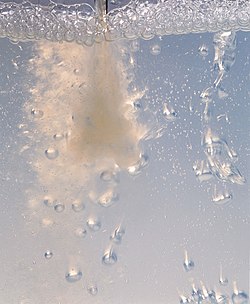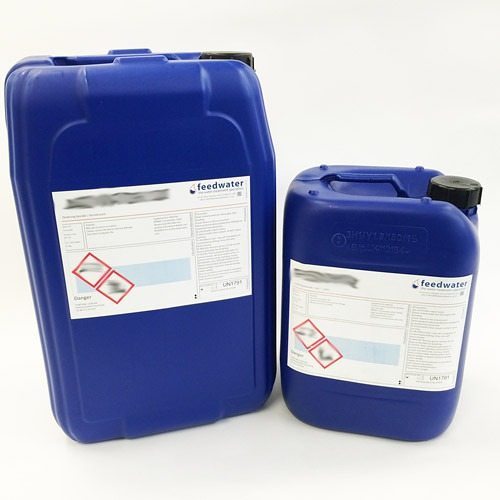The Main Differences Between Chemical Defoamer and Other Foam Elimination Agents
Exactly How a Chemical Defoamer Can Improve Effectiveness in Your Procedures and Processes
In today's affordable industrial landscape, operational performance is vital, and the duty of a chemical defoamer can not be forgotten. By attending to foam-related challenges that interfere with processes, defoamers not only promote smoother operations however additionally contribute to set you back savings and boosted item top quality. Their effect extends numerous sectors, making them a vital consideration for those seeking to maximize performance. However, recognizing the particular benefits and applications of defoamers raises vital inquiries concerning their selection and implementation. What variables should you take into consideration to optimize their efficiency in your procedures?
Comprehending Chemical Defoamers
Chemical defoamers play an important function in various industrial procedures by successfully lowering and protecting against foam formation. Foaming can cause operational inadequacies, boosted manufacturing prices, and jeopardized item quality. Defoamers are specialized chemical ingredients created to disrupt the stability of foam bubbles, therefore enabling smoother handling and improved performance throughout numerous sectors, consisting of food and drink, pharmaceuticals, and wastewater treatment.

These representatives generally are composed of surfactants, oils, or polymeric substances that lower the surface stress of the fluid, promoting the collapse of foam. The device whereby defoamers operate often entails the destabilization of foam structures, permitting quicker drainage of liquid and the release of caught air. Various formulations are customized to specific applications, thinking about aspects such as compatibility with the system, temperature level, and the nature of the fluid being dealt with.
Recognizing the composition and functionality of chemical defoamers is important for choosing the appropriate product for a given application. By maximizing defoamer option based on procedure demands, sectors can improve functional effectiveness, alleviate foam-related obstacles, and ultimately enhance total performance.
Benefits of Utilizing Defoamers
Using defoamers can dramatically boost functional efficiency throughout numerous sectors by effectively reducing foam-related problems. The existence of foam can interfere with processes, leading to boosted downtime, reduced performance, and prospective top quality deterioration in output. Defoamers aid deal with these obstacles by damaging down foam frameworks, consequently enabling smoother procedures.
One of the primary advantages of utilizing defoamers is the reduction of waste and rework. By reducing foam development, defoamers boost the uniformity of processes, ensuring that products are utilized effectively. This not only reduces operational expenses but additionally adds to sustainability campaigns by minimizing source intake.
Additionally, defoamers can improve item quality. In manufacturing settings, excessive foam can result in inconsistencies in product characteristics, affecting consumer complete satisfaction. By managing foam levels, defoamers aid preserve the desired physical homes of products.

Applications in Various Industries
The efficiency of defoamers extends throughout a variety of industries, where their application addresses specific foam-related obstacles intrinsic to each field. In the food and beverage sector, defoamers are crucial for optimizing production processes, such as developing and milk handling, where excessive foam can hinder flow prices and decrease performance. By reducing foam, these representatives improve item top quality and consistency.
In the chemical manufacturing field, defoamers are used in processes like paint production and wastewater therapy. Here, they prevent foam development that can disrupt mixing and separate phases, thus boosting the overall efficiency and performance of operations.
In drugs, defoamers play an important duty in the solution of fluid medicines, ensuring correct dose and stability by regulating foam during mixing and storage. (Chemical Defoamer)
Additionally, in the farming field, defoamers are made use of in chemical formulas to enhance application effectiveness and blog here decrease waste.
Selecting the Right Defoamer
Picking the ideal defoamer is crucial for accomplishing optimum performance in numerous applications. The selection procedure must start with an extensive understanding of the certain problems available, consisting of the kind of foam present, the handling problems, and the chemical compatibility with various other formula elements.
Defoamers are developed from a range of products, including silicone, mineral oils, and fats. Recognizing the appropriate structure is crucial, as different materials display varying effectiveness in varied atmospheres. Silicone-based defoamers are commonly favored in high-temperature applications due to their security, while natural defoamers might be more appropriate for water-based systems.
In addition, take into you can try these out consideration the defoamer's influence on the end product. Some solutions can change the useful or aesthetic residential or commercial properties, making it essential to choose a defoamer that fulfills item specs without compromising high quality.
Testing is another crucial step in picking a defoamer. Small-scale tests can offer useful understandings right into the defoamer's performance, allowing for changes before full-blown execution. By meticulously evaluating these factors, businesses can boost effectiveness and make certain that the defoamer successfully satisfies their functional needs.
Finest Practices for Implementation
Carrying out a defoamer effectively requires cautious preparation and adherence to best practices to maximize its effectiveness. Carry out a detailed assessment of the particular application and foam qualities. Comprehending the kind and resource of foam will lead the option of one of the most suitable defoamer solution.
Next, develop the ideal dosage (Chemical Defoamer). Begin with a small-scale trial to determine the minimal effective focus, as extreme use can bring about unfavorable effects on product top quality or operational performance
Tracking and changing the application approach is important; guarantee that the defoamer is presented at the best point at the same time for optimal effect, such as during mixing or instantly after foam development.

In addition, maintain clear interaction with all appropriate personnel to make sure consistent application techniques and to share understandings on performance end results.
Verdict
Finally, the application of chemical defoamers plays a pivotal duty in boosting functional performance across diverse sectors. By effectively destabilizing foam, these representatives promote quicker drain and air launch, therefore reducing interruptions and decreasing prices. The strategic application of defoamers not just improves throughput yet additionally makes certain regular item high quality and resource optimization. Inevitably, the unification of defoamers into industrial procedures promotes dependability and adds to general performance enhancement.

In the food and beverage industry, defoamers are critical for maximizing manufacturing processes, such as brewing and milk handling, where too much foam can impede flow prices and lower effectiveness. Silicone-based defoamers are often favored in high-temperature applications due to their security, while natural defoamers may be extra appropriate for water-based systems.